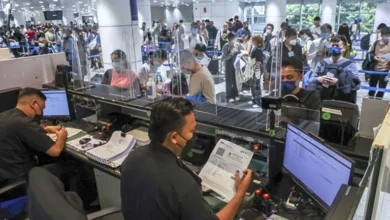The Fall Of The Ringgit Is Effects Of Mahathir & PH’s Failure
The Fall Of The Ringgit Today Is A Narrative Of The Lasting Effects Of Mahathir & PH's Failure Since 2018

The position of the value for Malaysian Ringgit (RM) in the international market is seen to be getting weaker compared to the American Dollar (USD).
From the online review that the author did, the latest exchange rate of RM to USD is 1USD equal to RM4.61.
A situation that has never happened in history.
In fact, if we check online, the value of RM has never risen to the level of RM3.94 for every 1USD, the last value before the fall of Barisan Nasional (BN) in 2018.
The question is, what is the real cause of the fall in the value of ringgit?
Before the writer comments further on the fall of the RM after the fall of BN in 2018, let’s first look at the cause of the current fall of the Pound Sterling.
Pound Sterling fell due to negative market sentiment towards UK Prime Minister Liz Trus’ plans to cut taxes and government spending by issuing several Gilt issues.
Markets assumed the UK would finance the deficit by borrowing from outsiders.
Interest rates are expected to rise and the UK’s debt burden to increase, prompting investors to sell the Pound Sterling currency.
Liz Trus’ reasoning is that the savings from paying government taxes is to enable investment which is expected to generate economic growth.
READ THIS:
It can be easily understood like this, the actions of Liz Trus who cut taxes which are the government’s main income has created a negative perception of the market towards the UK economy.
The market believes that, with the reduction in government income, the UK will borrow externally to finance the spending deficit.
This caused the market’s confidence in the UK government to decrease and as a result, investors began to sell the Pound Sterling for fear that it would fall badly if the UK experienced an economic crisis.
The fall of RM started from the era of Pakatan Harapan
Just like the UK, the value of RM started to fall after Pakatan Harapan started taking over the administration of the Malaysian government.
READ THIS:
As soon as Pakatan Harapan announced the abolition of GST in Malaysia, market confidence began to fall.
The reason is the same as in the United Kingdom.
With the abolition of GST, the country lost an income of RM43 billion a year or about RM3.5 billion a month.
To make matters worse, when PH announced a 3-month tax-free period for the transition period from the GST to SST tax system.
In the transition period of 3 months alone, the country has lost an income of RM10.5 billion.
PH should have announced what PH plans to cover the loss of RM10.5 billion in income.
It is very important so that the market does not lose confidence in the Malaysian economy.
But not only did PH not announce any plans, PH was also seen starting to sell national assets and issuing bonds to cover the spending deficit.
The market began to doubt PH’s confidence in managing the economy because for them how long PH can survive by selling national assets and borrowing from outside.
Over time the accumulated assets will be sold off and foreign countries will also lose confidence in giving new debt to PH.
The situation was further complicated when PH announced the cancellation of several mega project contracts signed by the previous government with foreign countries.
However, it was finally realized that the project was not completely cancelled, but only to change to PH-oriented contractors.
PH’s ability to manage the economy became a sign and PH’s integrity also began to be questioned.
As a result, investors started selling RM in the international currency market and within less than a year of PH’s rule, the value of RM fell to RM4.067 for every 1USD.
Perikatan Nasional’s policy worsens the national economy
When the PH government fell and was replaced by the Perikatan Nasional government led by Muhyiddin Yasin, the situation became worse.
The policy of locking up the people for almost 17 months by Muhyiddin has really made the Malaysian economy even more difficult to recover.
With the policy of nullifying democracy and paralyzing the country’s economy, there is definitely no basis for the market to believe in Malaysia’s economic recovery.
The value of RM continued to fall to the level of RM4.21 for every 1USD in the last month of the Perikatan Nasional government.
READ THIS :
When the Perikatan Nasional government fell, the Keluarga Malaysia government took over.
But it is still seen as failing to create a sign that the government already has a formula to restore the economy.
The situation worsened when the war broke out between Russia and Ukraine which caused the world to be threatened with inflation.
As a country that depends on 90% of the food imported from foreign countries, it has caused the value of RM to continue to fall.
When importers want to import food from abroad that is traded in USD, then they have to sell RM.
This causes the dumping of RM in the currency market and creates a much higher supply capacity request.
The result is as we are experiencing today, the RM fell to the level of RM4.61 for every 1USD.
PH leaders should not try to place the full blame on the current government as a result of the fall of the ringgit.
Because the main cause comes from PH’s shallow management of the country’s economy and PH’s grudge against Barisan Nasional.




